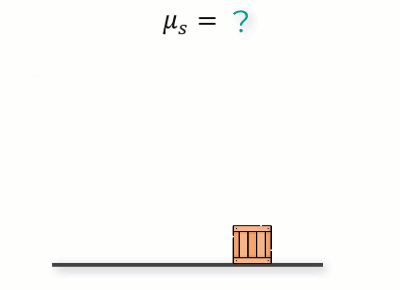CURRICULUM
Vectors in Physics: Concept Busters in < 60 sec
Available in
days
days
after you enroll
- Unlock Your Full Potential in Physics: A Special Message for You!
- Dot Product of Two Vectors (and Which Angle to Take) (0:45)
- Dot Product of Force and Displacement = Work Done (0:52)
- Using Dot Product to Find Work Done When the Force is at an Angle to Displacement (0:58)
- How to Find the Correct Direction of Cross Product of Two Vectors (0:59)
- Parallelogram Law of Cross Product of Two Vectors (0:59)
- How to Find Torque Using Cross Product (0:47)
- Which Angle to Use While Finding Cross Product of Two Vectors (0:31)
- The Vector Gangsters! (& The Right Hand Rules!) (0:12)
Motion in a Straight Line
Available in
days
days
after you enroll
- What is Gravitational Acceleration (0:57)
- Velocity & Acceleration at the Top (motion under gravity) (0:40)
- Can Positive Acceleration Reduce Velocity? (0:54)
- Distance Vs. Displacement: 6 Key Differences (0:53)
- Velocity Vs. Speed: Key Differences (0:44)
- Instantaneous Velocity (0:56)
- Direction of Acceleration (0:52)
- What does Positive Acceleration Mean (0:51)
- Is Minus 25 m/s > 0 m/s (0:58)
- Velocity Time Graph and Position Time Graph (0:59)
- Integration Visualized
Motion in Two Dimensions
Available in
days
days
after you enroll
- Components of Acceleration - Parallel to Velocity and Perpendicular to Velocity (0:55)
- Average Velocity Between Two Points Using Vectors (0:56)
- Projectile Motion - Bullet and the Monkey (0:39)
- What is Position Vector? (0:46)
- What is Reference Frame in Physics (0:58)
- When is Instantaneous Velocity = Average Velocity (0:57)
- Velocity Vector and its Components (0:58)
- Projectile Motion and Time of Horizontal Flight (0:57)
- Projectile Motion at Complementary Angles (0:52)
- Range in Projectile Motion (0:43)
- Three Conditions for Circular Motion to Happen (0:28)
Newton's Laws of Motion
Available in
days
days
after you enroll
- Newton's First Law of Motion: The Law of Inertia (0:54)
- Newton's First Law of Motion: Law of Inertia (Example II) (0:48)
- Newton's First Law of Motion: The Law of Inertia (Example III) (0:51)
- Newton's Second Law of Motion: Understanding F = ma (0:45)
- How to Use F = ma: Direction of Forces and Components (0:54)
- How to Use Newton's Second Law of Motion Equation F = ma (0:36)
- Decoding the Dynamics: Mass, Force, and Acceleration (0:29)
- Sliding Book: Exploring Friction and Motion Dynamics (0:38)
- Unraveling the Mysteries of Tension Force (0:58)
- Mastering Free Body Diagrams: Avoiding Common Pitfalls (0:28)
- Understanding Acceleration in Connected Systems (0:30)
- Determining Tension in a Three-Body System (0:57)
- Mastering Free Body Diagrams: Marking Forces Accurately (0:46)
- How to Calculate Apparent Weight in an Elevator at Constant Velocity (0:47)
- Unlocking Newton's Third Law: Understanding Action and Reaction Forces (0:59)
- Newton's 3rd Law Pairs: They Always Act on Different Bodies (0:26)
- Does the Earth Move when an Apple Falls? (0:55)
- Forces at Play: Understanding Static Friction (0:56)
- The ANT 🐜 and The Coefficient of Static Friction Experiment (0:07)
- Determining the Coefficient of Static Friction (0:56)
- The Dynamics of Drag Force and Terminal Velocity (0:12)
- The Art of Minimizing Drag in Skiing (0:26)
- The Journey to Terminal Velocity (0:36)
- How Centripetal Force Curves Motion (0:58)
- Navigating the Curves: The Physics of Centripetal Force and Circular Motion (0:58)
- The Art of Vertical Circular Motion (0:59)
- Weight of 1 Kg Mass, 2000 KM Above the Earth (0:25)
- Visualizing mgSinθ (0:37)
- Newton's 1st Law: Rest is Best (0:10)
- Newton's 1st Law in Nature (Courtesy @explaining.astrophysics) (0:28)
Work Power and Energy
Available in
days
days
after you enroll
- Equal Force, Unequal Mass: Can Two Iceboats Share the Same Kinetic Energy? (0:54)
- The Work-Energy Theorem in Action (0:20)
- Why No Work is Done When Motion and Force are Perpendicular (0:48)
- Spring Force: Exploring Work Done by Variable Forces (0:10)
- Power in Vertical Circular Motion: Is it Positive, Negative or Zero (0:53)
- Friction: Why It's a Non-Conservative Force? (0:53)
- Conservative Forces are Path Independent (0:37)
- How to Determine if a Force is Conservative (0:56)
- Understanding Zero Work by Conservative Forces in Closed Paths (0:29)
- Non Conservative Forces: Exploring the Role of Friction and Drag in Physics (0:49)
- Gravity Simplified: Understanding Work and Energy Conservation with Conservative Forces (0:52)
- Can Non-Conservative Forces Increase Mechanical Energy? (0:36)
- Understanding Energy Transformation: Work, Potential Energy, and Kinetic Energy (0:58)
- Can a Force Increase Kinetic Energy, Yet do No Work (0:54)
Center of Mass, Linear Momentum and Rotation
Available in
days
days
after you enroll
- The Secrets of Center of Mass: How Symmetry Simplifies Physics (0:50)
- Momentum vs. Kinetic Energy: Which Ball is Easier to Catch? (0:58)
- Force and Impulse: Exploring the Area Under the Curve (0:31)
- Comparing Momentum: Which Iceboat Finishes with Greater Momentum? (0:57)
- Which Ball is Easier to Catch (0:58)
- Area Under Force Time Graph (Impulse and Momentum) (0:31)
- Momentum and Impulse of Two Boats (0:57)
- Does Acceleration of a Rocket Change? (0:49)
- Does the Rocket Push Against Earth During Upward Thrust (0:44)
- Mastering Angular Position: Revolution and Radians Explained (0:39)
- Understanding Rotational Inertia: Why Some Rotations Are Harder Than Others (0:49)
- How to Use the Parallel Axis Theorem (0:58)
- The Science Behind Door Handles: How Torque Makes Opening Easier (0:58)
- Rolling friction and Why it Happens (0:55)
- What is Rolling Friction (0:55)
- Rolling Down an Incline: How Moment of Inertia Determines Speed (1:00)
Electricity
Available in
days
days
after you enroll
Cross Product of 2 Vectors
(& Direction of the Resultant Vector)
Awesome choice! Your physics journey just took off. Watch your inbox for marvels
